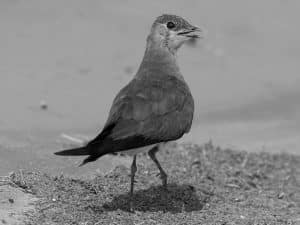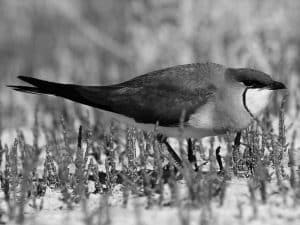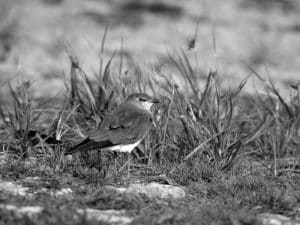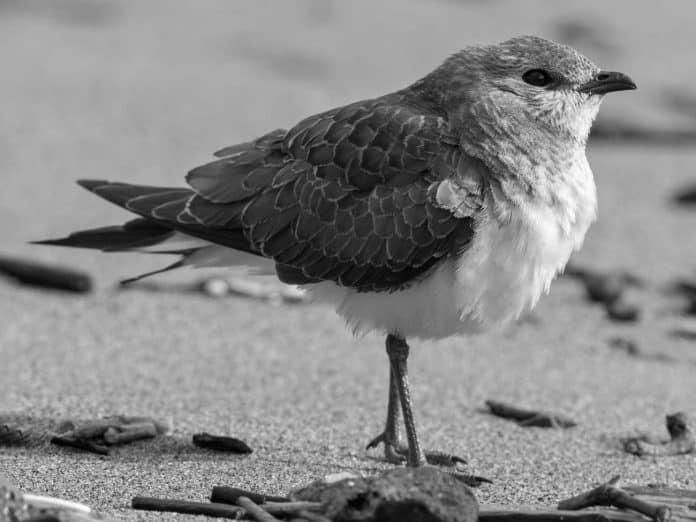Introduction to the Black-Winged Pratincole
The black-winged pratincole in Tanzania, scientifically known as Glareola nordmanni, is a bird species that belongs to the family Glareolidae. This species is also commonly referred to as the Nordmann’s pratincole. Black-winged pratincoles are migratory birds that breed in Central Asia and Europe and spend their winters in Africa, including Tanzania. Black-winged pratincoles are medium-sized birds, with an average length of 23-25 cm and a wingspan of 58-66 cm.
Habitat and Distribution of the Black-Winged Pratincole in Tanzania

The black-winged pratincole can be found in a variety of habitats in Tanzania, including wetlands, grasslands, and savannas. They are commonly seen near rivers, lakes, and other bodies of water. Black-winged pratincoles are distributed across sub-Saharan Africa, from Mauritania to Ethiopia, and down to South Africa. In Tanzania, they can be found in the eastern and southern parts of the country, including the Serengeti, Selous, and Ruaha National Parks.
Physical Characteristics of the Black-Winged Pratincole
Black-winged pratincoles have a unique appearance, with a black and white body, black wings, and a distinctive red bill. They have long, pointed wings that help them perform aerial acrobatics and a short, forked tail. Black-winged pratincoles have a brownish-black cap on their head with a white eyebrow and a white collar around their neck. Their legs are short and yellow. They are well camouflaged in their natural habitat, making them difficult to spot when they are not in flight.
Breeding and Nesting Habits of the Black-Winged Pratincole
Black-winged pratincoles are monogamous and breed in Central Asia and Europe during the summer months. They typically lay two eggs in a shallow scrape in the ground, which is lined with plant material and feathers. Both parents take turns incubating the eggs and caring for the chicks. The chicks are able to leave the nest shortly after hatching and are able to fly within a few weeks.
Feeding Behavior and Diet of the Black-Winged Pratincole

Black-winged pratincoles are primarily insectivores, feeding on a variety of insects, including grasshoppers, beetles, and flies. They are known for their unique feeding behavior, which involves catching insects in mid-flight. Black-winged pratincoles fly low over the ground or water, snapping up insects with their bills as they fly. They are also known to feed on small fish and crustaceans.
Migration Patterns of the Black-Winged Pratincole
Black-winged pratincoles are migratory birds that spend their winters in Africa, including Tanzania. They typically arrive in Tanzania in September and leave in March or April. During their migration, black-winged pratincoles travel long distances, flying over deserts, mountains, and open water. They are able to cover up to 500 km in a single day, making them one of the most efficient migratory birds.
Conservation Status and Threats to the Black-Winged Pratincole in Tanzania
The black-winged pratincole is listed as a species of “Least Concern” by the International Union for Conservation of Nature (IUCN). However, their populations are declining due to habitat loss and degradation, as well as hunting and egg collection in some areas. In Tanzania, wetland degradation and conversion to agricultural land are the biggest threats to black-winged pratincoles. Conservation efforts are underway to protect their habitats and raise awareness about their importance.
Best Places to Spot and Observe Black-Winged Pratincoles in Tanzania

There are several places in Tanzania where you can spot and observe black-winged pratincoles, including national parks and wetland areas. The best time to see them is during their winter migration, from September to March. Some of the best places to spot black-winged pratincoles in Tanzania include the Selous Game Reserve, the Serengeti National Park, and the Ruaha National Park.
Tips for Birdwatchers and Photographers Interested in the Black-Winged Pratincole
If you are interested in birdwatching or photography, here are some tips for observing black-winged pratincoles in Tanzania:
- Hire a local guide who is familiar with the area and can help you locate the birds.
- Be patient and observant, as black-winged pratincoles can be difficult to spot when they are not in flight.
- Use a pair of binoculars or a camera with a telephoto lens to get a closer look at the birds.
- Approach the birds slowly and quietly, so as not to scare them away.
- Respect the birds and their habitat, and do not disturb them or their nests.
Conclusion: Appreciating the Beauty and Grace of the Black-Winged Pratincole in Tanzania
The black-winged pratincole is a remarkable bird species that graces the skies of Tanzania with its masterful aerial displays. Their unique physical features, feeding behavior, and migration patterns make them a fascinating species to observe. While their populations are declining due to habitat loss and degradation, conservation efforts are underway to protect their habitats and raise awareness about their importance. By appreciating the beauty and grace of the black-winged pratincole, we can help ensure that this species continues to thrive in Tanzania and beyond.

































